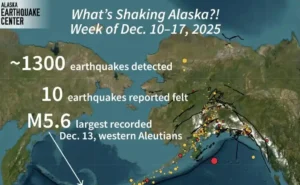Alaska’s seafood industry plummeted, costing $1.8 billion and cutting profits in half. New NOAA research attributes this collapse to rising borrowing rates, labor, and energy expenses. The fall in Alaska’s core industry hurt local economies, cost roughly 38,000 jobs, and cut U.S. GDP by $4.3 billion. Overall, the situation highlights Alaska’s seafood industry’s significant challenges and broader implications for the national economy.
Alaska, Washington, Oregon, and California shed $191 million in state and local tax revenue. Director of the Alaska Fisheries Science Center, Robert Foy, emphasized the national ramifications, stating that Alaska’s seafood industry is critical to the U.S. seafood economy. According to the report, fishing is essential to the economics and identities of Alaska’s coastal settlements.
Alaska’s commercial fishing sector, which has thrived for decades, is experiencing severe challenges threatening its identity and social cohesiveness today. Steve Kasperski, the snapshot’s principal author, stated that the decline in fishing endangers the way of life in many Alaskan settlements. Leaders in the fish industry were so concerned about the reduction that they requested NOAA Fisheries perform an independent investigation.
Economists believe that increasing interest rates, rising energy prices, and rising wages are the primary drivers of the decline. They saw a decrease in revenue as prices for the most significant species decreased across the board. Following the pandemic, firms adjusted inventory management to reflect customer buying habits, which affected the market.
International competition is another issue as some Russian fisheries are Marine Stewardship Council members and promote their products as “Alaska pollock.” This change threatens sustainable domestic fisheries in the global market. All told, these variables contributed to a 32 percent drop in fishing vessel income and a sharp loss in the number of Alaska’s operational commercial fishing vessels and seafood processors.









